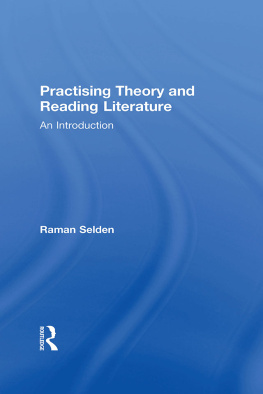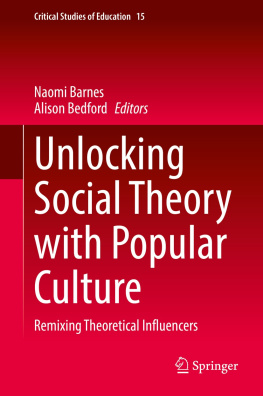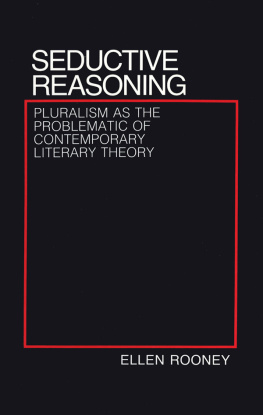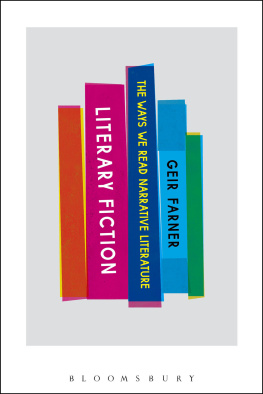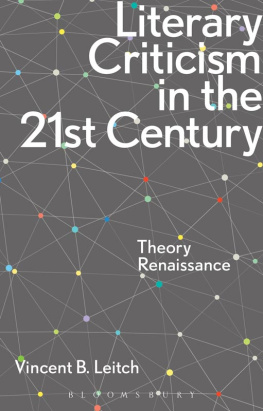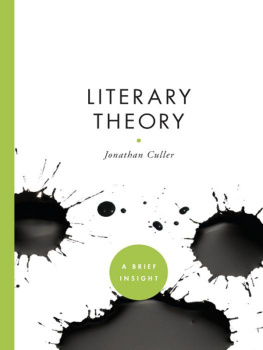Bloomsbury Academic
An imprint of Bloomsbury Publishing Plc
175 Fifth Avenue | 50 Bedford Square |
New York | London |
NY 10010 | WC1B 3DP |
USA | UK |
www.bloomsbury.com
First published 2012
Edward L. Tomarken, 2012
All rights reserved. No part of this publication may be reproduced or transmitted in any form or by any means, electronic or mechanical, including photocopying, recording, or any information storage or retrieval system, without prior permission in writing from the publishers.
No responsibility for loss caused to any individual or organization acting on or refraining from action as a result of the material in this publication can be accepted by Bloomsbury Academic or the author.
Library of Congress Cataloging-in-Publication Data
A catalog record for this book is available from the Library of Congress.
ISBN: 978-1-6235-6290-8
Typeset by Fakenham Preprss Solutions, Fakenham, Norfolk NR21 8NN
In memory of
Peter David Tomarken 19422006
To
Beau, Emma, and Jamie Grimes
For
My Literary Theory Students
Summary: I begin with deconstruction because all of the other theorists in the volume use it as a strategy. The first topic of discussion is decentering, illustrated by Christoph Waltz who plays SS officer Hans Lander in Quentin Tarantinos Inglourious Basterds (2009). The second key idea of Derridas, originary myths, is described in relation to Inglourious Basterds. Since Derridas main contribution is his concept of metaphor, the second section uses Kill Bill to explain his view that death is inherent in metaphor. However, the third section, an analysis of The Dark Knight, makes clear that the films move beyond deconstruction toward ethical ends. Another area where films move beyond deconstruction is history, considered in a discussion of Inglourious Basterds. Two other uses of deconstruction for ethical ends are seen in The Bourne Supremacy, the goal of which is personal integrity, and Everyone Says I Love You, designed to highlight a new kind of friendship. The last two films, Deconstructing Harry and Man of the Year, are examples of satirical uses of deconstruction, demonstrating in particular how deconstructing ones self may serve an ethical purpose.
This book begins with deconstruction for two reasons: 1) all of the theorists in the succeeding chapters use deconstruction as a strategy; 2) deconstruction in the context of film provides a means of relating literary theory to life, to the issues and problems of our everyday existence. In an interview, Derrida was asked what he thought of the term deconstruction being bandied about in common parlance. He replied that, even if people did not understand it as he would wish, the term must have some meaning in common usage and about that he was not unhappy. This chapter will show how the use of deconstruction by theorists is related to its applicability to daily life.
Inglourious Basterds (2009), starring Brad Pitt and Christoph Waltz, provides a vivid illustration of deconstruction. In fact, the central plot of this film demonstrates how a movie-maker and a cinema owner deconstruct Nazism. The story involves Hitler and his staff attending the premiere of a film about a German sniper who single-handedly killed nearly 300 Allied soldiers. Hence the film is entitled Nations Pride. During the viewing, the cinema is set on fire by a young woman whose family has been murdered by the Nazis. The fuel used is highly flammable old films. While burning alive, Hitler and his senior officers are shown a film made by the cinema owner informing her victims that they are dying at the hands of a Jew, who laughs as the cinema burns. The Nazi movie is one of Hitlers pet projects: he wishes to defeat David Selznick, the Jewish Hollywood mogul, at his own game. Tarantino turns the tables on Hitler. We see the Fhrer and his generals so enamored with the heroic exploits of the German sniperas presumably we are by Tarantinos filmthat they are unaware of the plot to kill them unfolding around them in the cinema.
Decentering and Christoph Waltz
The process being portrayed by Tarantino is basic to deconstruction, what Derrida calls decentering. For Hitler and his staff, Nations Pride, the Nazi propaganda movie, is the heart of a project to convince the German army that they can win the war. For the Allies the film screening provides a means of destroying the Third Reich which, in a moment of self-congratulation (with the exception of one officer, who decides not to give the game away), is caught off guard. Derrida explains as follows: At the center the permutation or transformation of elements [] is forbidden. [] Thus it has always been thought that the center, which is by definition unique, constituted that very thing within a structure which while governing a structure, escapes structurality []. The center is not the center (Structure, 84). The German high command is unable to comprehend how Nations Pride can be the center of a plan to destroy the command structure of the German army. The movie-house is another example of decentering in that it was conceived by the Germans as a refuge and made secure as such, but the Allies convert the secure refuge into a tomb, a fire trap that prevents escape. Tarantinos use of stylized violence, a hallmark of most of his films, is very much in evidence here. Prevented by the Nazis from doing his job because of his skin color, the Negro projectionist flips a cigarette into the pile of film reels, igniting the fire, while the inglorious basterds in the balcony machine-gun down the German officers. The carnage points up the surreal, fantasy-like quality of the scene: the point being not that this could have happened but that the imagined possibility is based upon changing the center from Hitler and his retinue to the cinema owner, the projectionist, and the basterds. Turning Nazi power upon itself is not so much a historical possibility as an imaginative leap involving a violent questioning of customary assumptionsin this instance, that the Nazis can control the historical record. For the goal of deconstruction is not so much to subvert the establishment or change the state of things as to put accepted premises into play, to shake up our way of thinking.
The one German officer capable of such thinking, who understands how the enemy plans to use the cinema, is the Nazi SS officer, Hans Lander, the only German to anticipate and uncover the Allied plot. His ability at decentering is seen in the opening scene of the film. Known as the Jew Hunter, he comes to a French farmhouse in search of a Jewish family. While Lander, brilliantly portrayed by Christoph Waltz, is interviewing the Frenchman in the farmhouse, the audience is shown the Dreyfus family hiding beneath the floorboards. Landers speech and action illustrate deconstruction. First he explains his pride in his moniker, the Jew Hunter, an achievement, he explains, that derives from thinking not like a German, but like a Jew. Germans, he continues, act like hawks and therefore expect Jews to hide in places a hawk might choose. Jews, on the other hand, behave like rats and therefore seek refuge in places where hawks would not expect them to be. He goes on to point out that it is no more offensive to characterize Jews as rats than to call him the Jew Hunter. Both are merely adapting to their situation: Lander is doing his job and Jews are struggling to survive.
Having established that he is a hawk able to adopt the perspective of a rat, Lander makes clear that he knows the Frenchman is harboring a Jewish family on his property, but that if he cooperates his own family will be spared. Note that here Lander decenters the French farmers focus, moving his concern from the Dreyfus family to his own family. Also, as we shall see, language is crucial in this scene. Lander, an adept linguist, begins the conversation with the Frenchman in French, then changes to English, understood by the Frenchman but not by the Jewish family. Having made his pact with the Frenchman in English, Lander reverts to French, stating, for the Jewish family to hear, that the investigation is over. Upon leaving, he orders his men in German to machine-gun the unsuspecting family beneath the floor. As we shall see, language and the manipulation of words is a key element of deconstruction.
Next page



